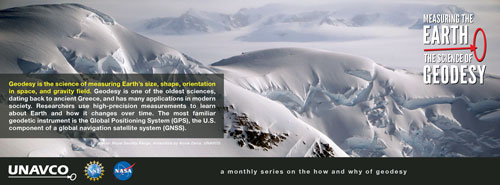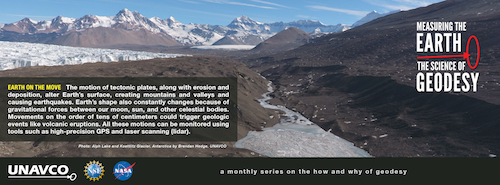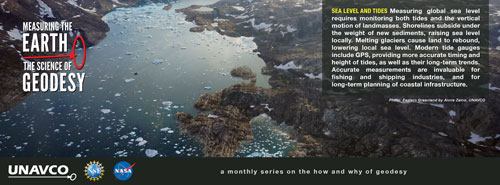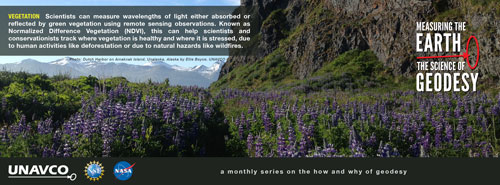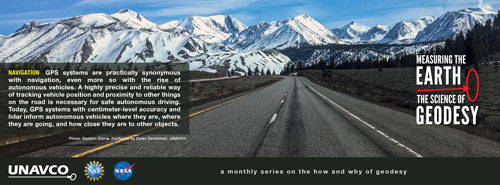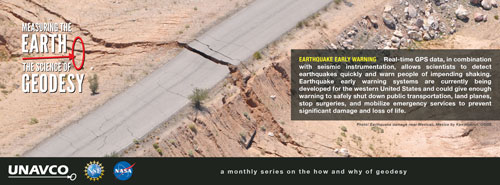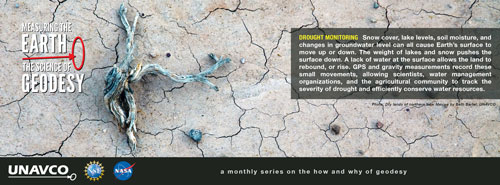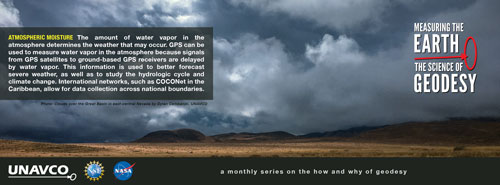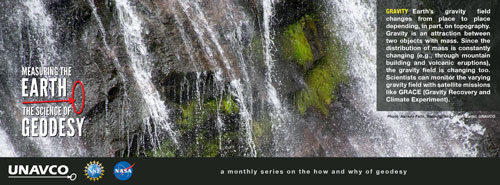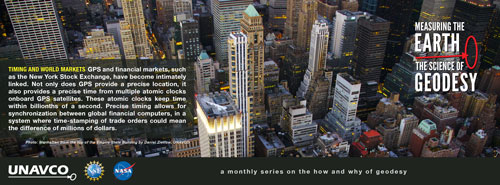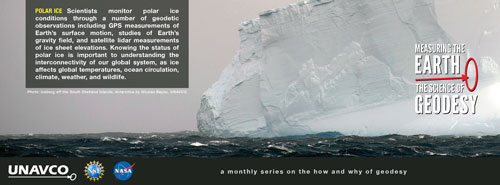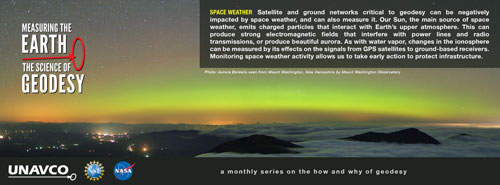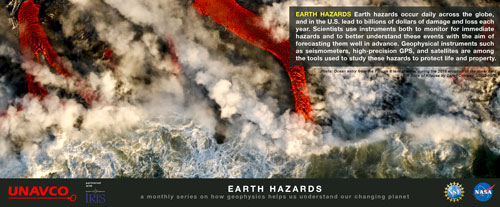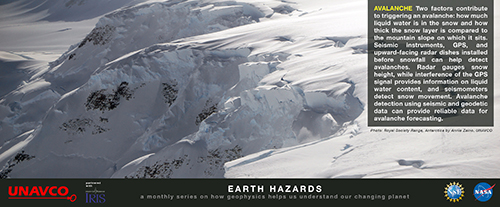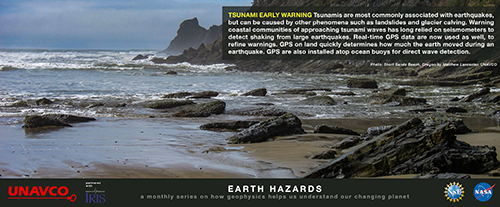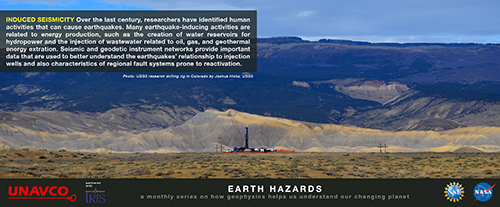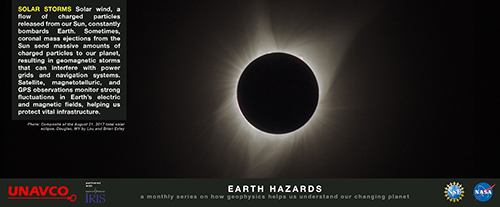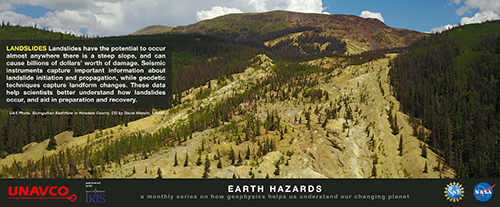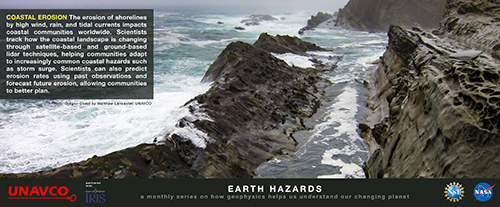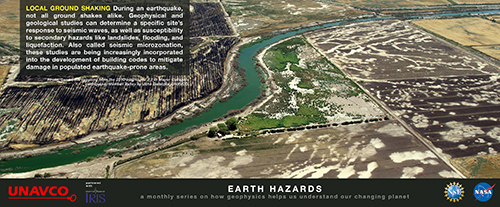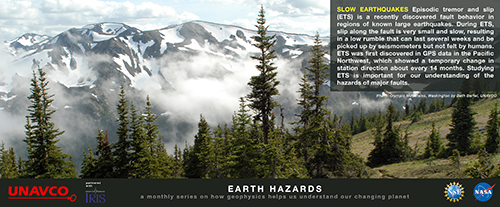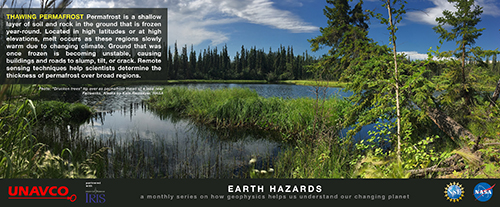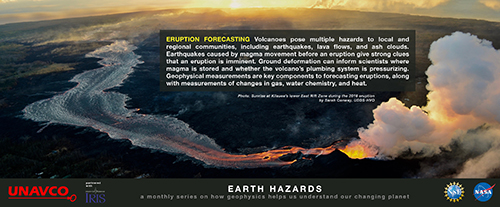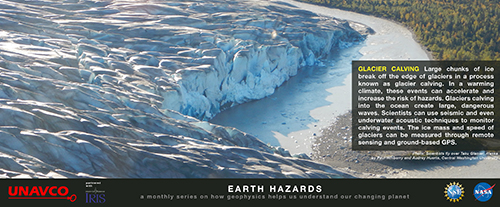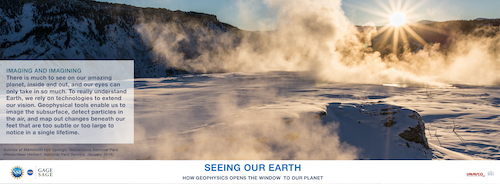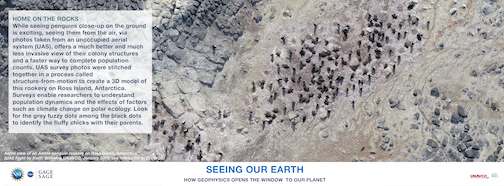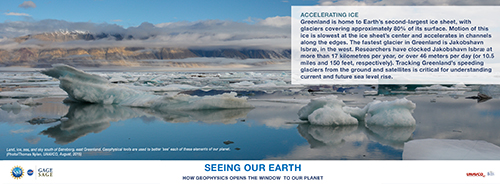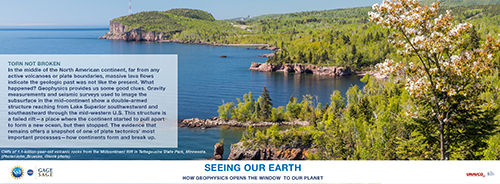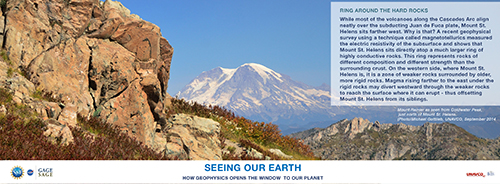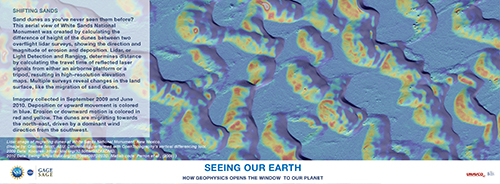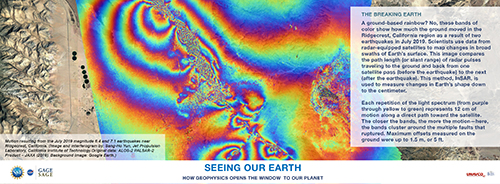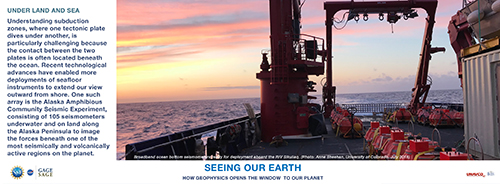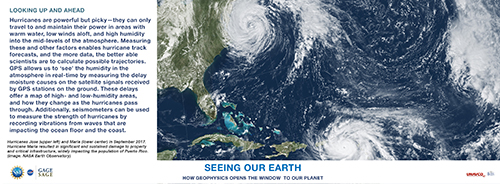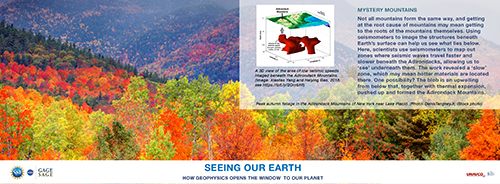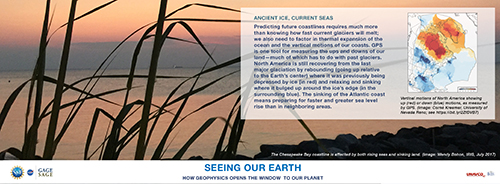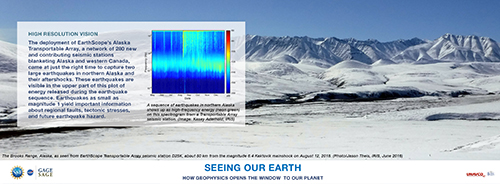All materials are made freely available under a Creative Commons CC BY 4.0 license. Please credit EarthScope Consortium.
Tectonic Motion Measured by GPS
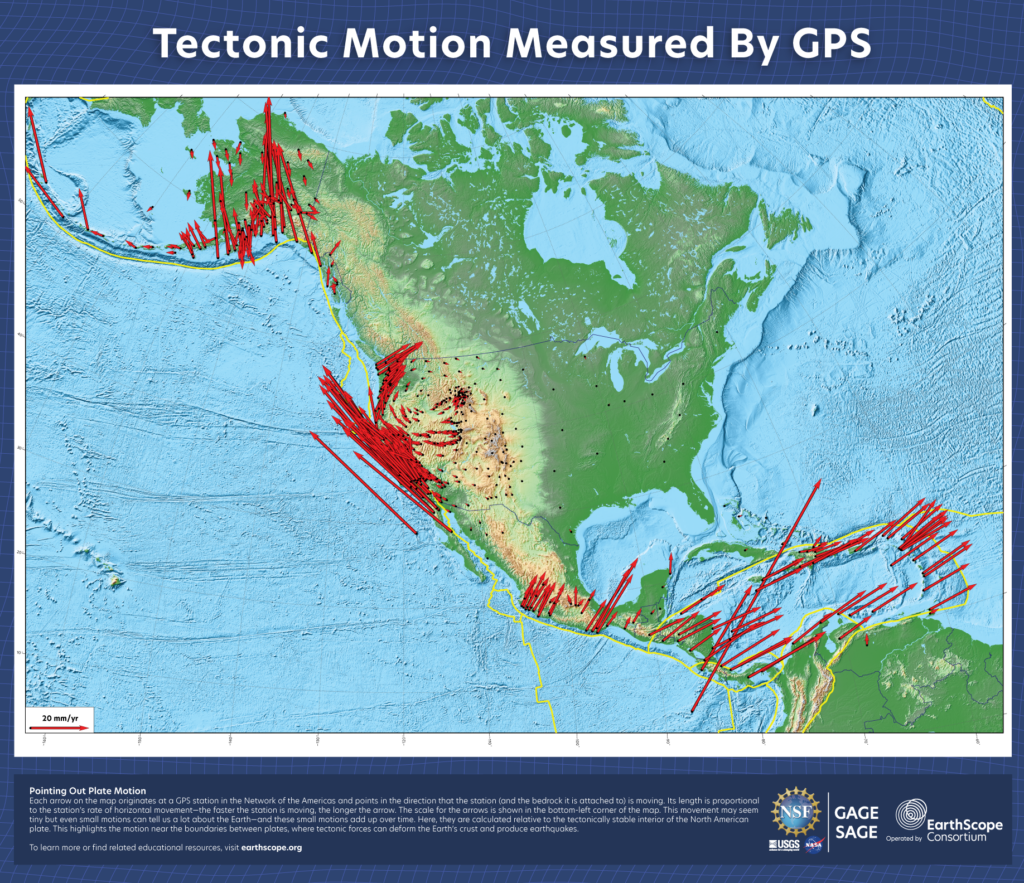
Explore large-scale tectonic motion as measured by the Network of the Americas. Created by Scott Johnson and Christine Puskas. Print as a 22″ x 25.5″ poster.
Download high-resolution files
Front: PDF or PNG
Back: PDF or PNG
The Science of Geodesy (trifold brochure)
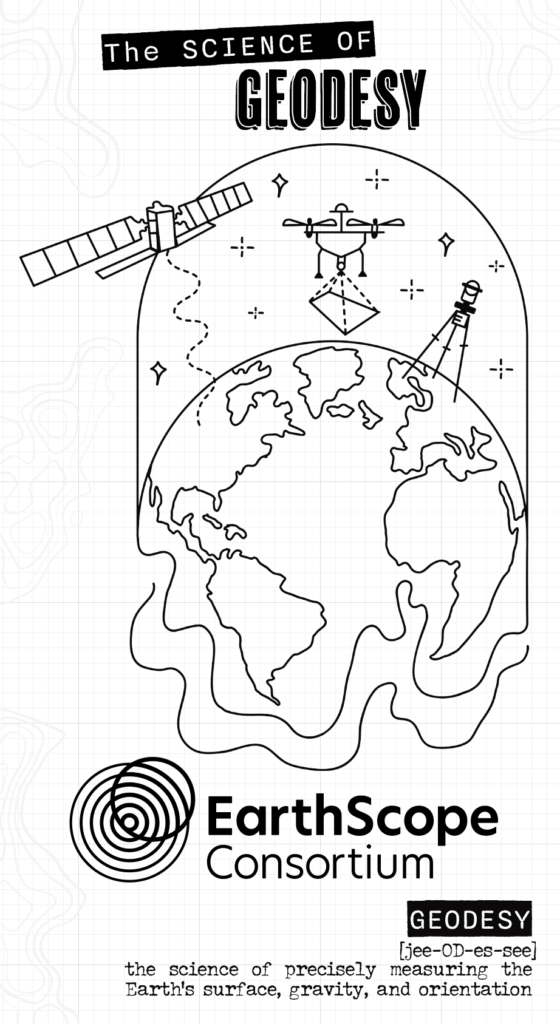
This trifold brochure used for public outreach describes several applications of GPS stations in the Network of the Americas, including water resources, plate tectonics, weather forecasting, and the ShakeAlert Earthquake Early Warning System. Created by Scott Johnson and Elizabeth Ashley.
Download high-resolution PDF
What GPS Can Tell Us About Earth
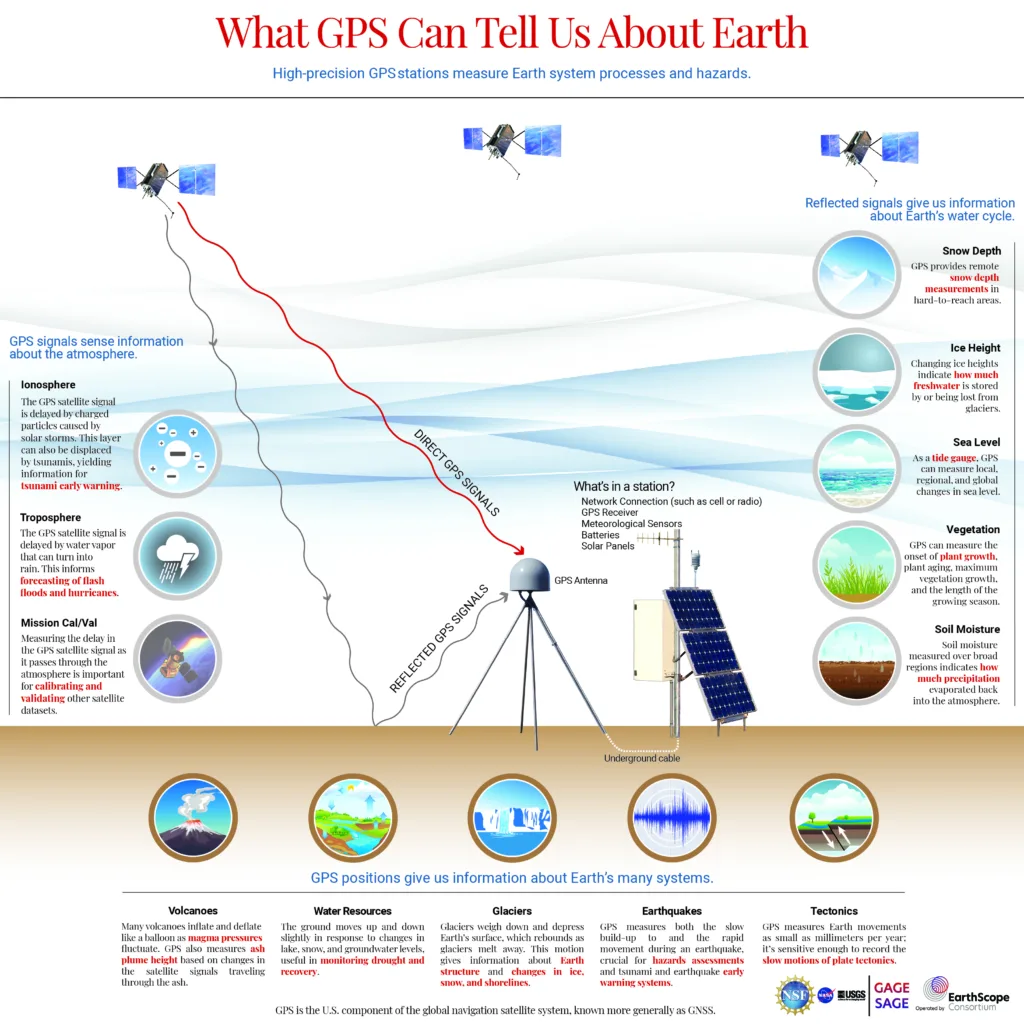
GPS is helpful for more than just navigation. Explore how scientists can use GPS to measure plate tectonics, earthquakes, snow depth, sea level, and more with this posters. Created by Beth Bartel and Daniel Zietlow with assistance from Gene Malowany, updated by Lucia Bellino. Print as a 22″ x 22.5″ poster.
Download as high-resolution PDF or PNG
Measuring Groundwater
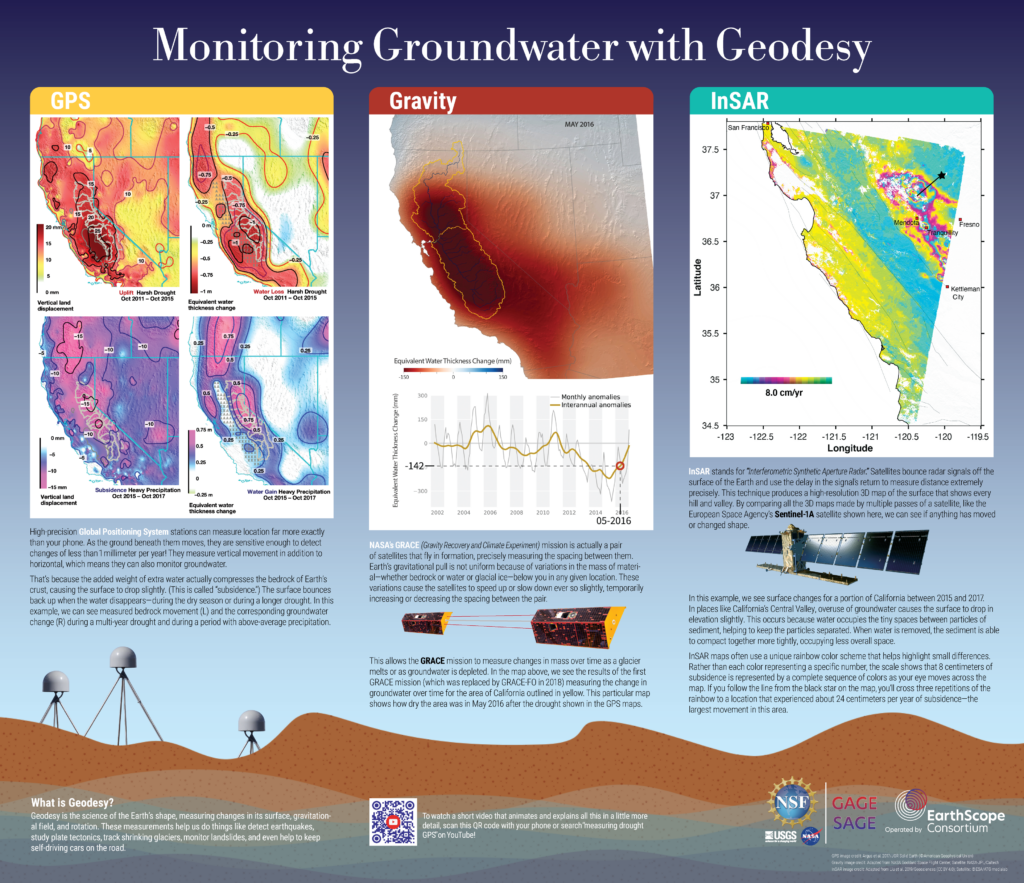
Geodesy provides multiple tools that can detect changes in water resources. Learn how GPS data, satellite gravity instruments, and InSAR can track groundwater change, using the example of California. This poster was created by Scott Johnson with assistance from Gene Malowany. Spanish translation by Marina La Grave. Print size is 22″ x 25.5″.
Download as high-resolution PDF in English or Spanish
InSAR
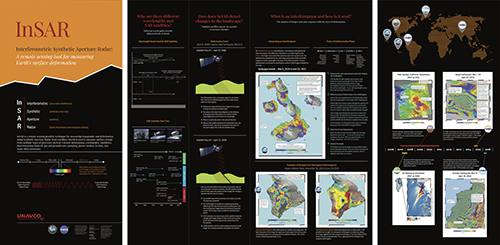
Learn about InSAR, a remote sensing geodetic technique for measuring topography and deformation. InSAR can measure cm-level changes in the landscape from earthquakes, volcano deformation, groundwater withdrawl, and more. This poster was created by Sarah Moore, 2016 USIP Intern, with assistance from Shelley Olds, Scott Baker, and Gene Malowany. Designed as a three-paneled wall mounted poster. The center panel is 4′ x 4′ and the side panels are 2′ x 4′.
Download as high-resolution PDF (archived UNAVCO file)
Reading Interferograms and other InSAR Basics
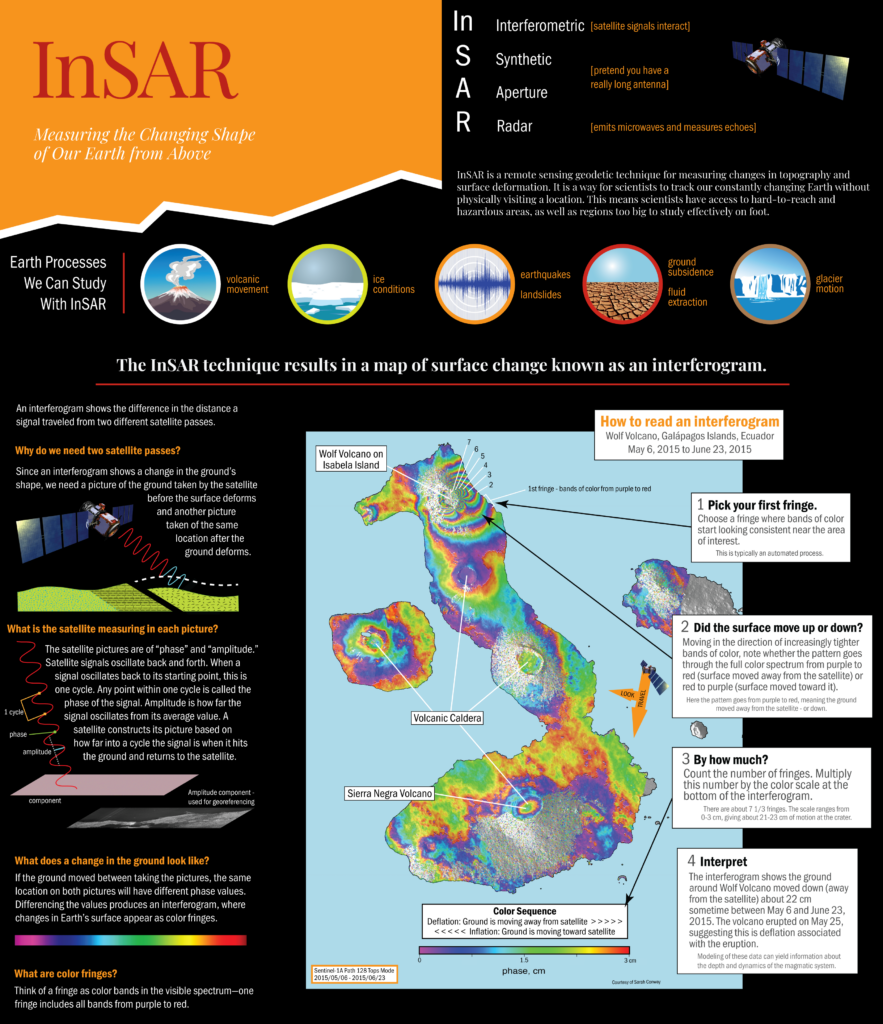
How do you read an InSAR interferogram and how do we use them to study our Earth? Learn more with this poster suitable for introductory and upper-level geoscience classrooms. This poster was developed by Daniel Zietlow and Beth Bartel from a poster created by Sarah Moore, Shelley Olds, Scott Baker, and Gene Malowany, with input from Beth Pratt-Sitaula. Special thanks to Gareth Funning for review and contributions. Print as a 22.5″ x 26″ poster.
Download high-resolution files
Front: PDF PNG
Back: PDF PNG
What is Geodesy?
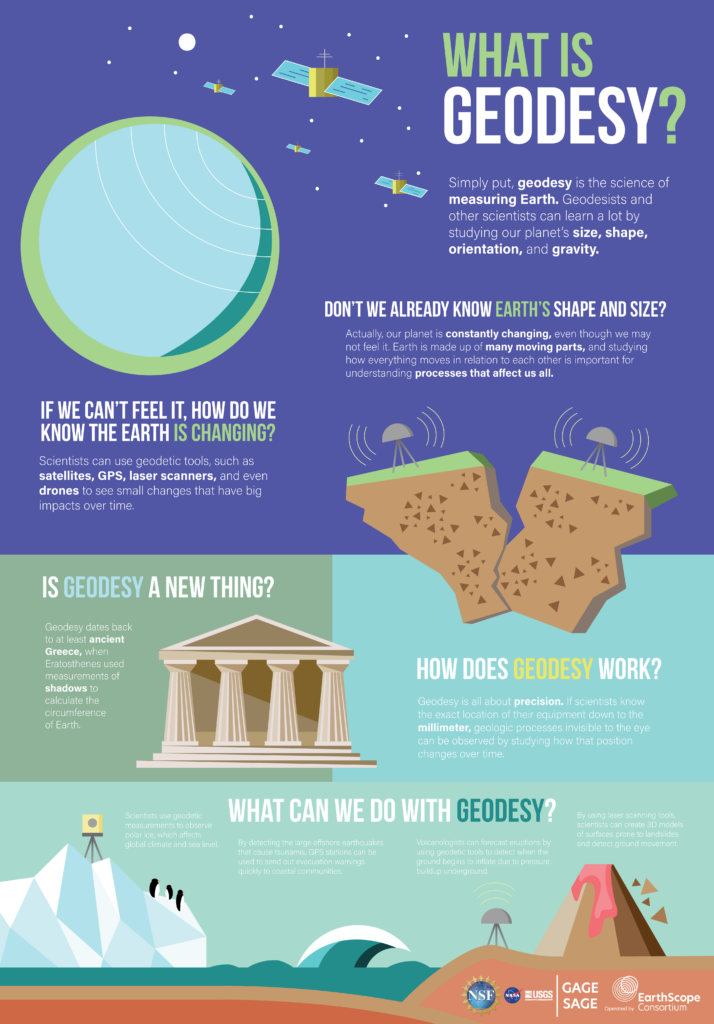
What is geodesy? How does geodesy work? What can we do with geodesy? Explore these questions and more with this introductory poster. This poster was created by Christopher Chase Edmunds. Print as a 15″ x 21.5″ poster. Spanish translation contributed by Franco Sebastian Sobrero, Universidad Nacional del Litoral, Argentina. French and German translations courtesy of Swisstopo.
Download high-resolution files
English: PDF PNG
Spanish version: PDF JPG (archived UNAVCO files)
German version: PDF (archived UNAVCO files)
French version: PDF (archived UNAVCO files)
Geodetic Toolbox
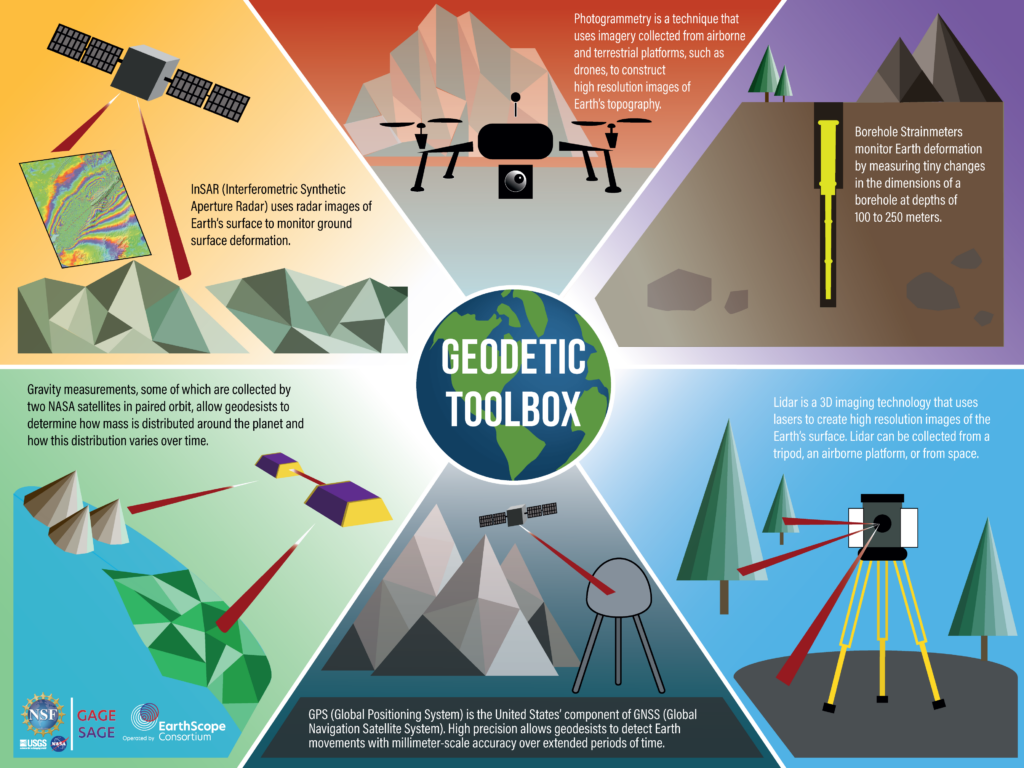
Geodetic instruments measure the changing shape of our Earth underground, at the surface, in the air, and from space. Learn more about GPS, InSAR, lidar, gravity, borehole instrumentation, and photogrammetry with this poster created by Ellie Ellis and updated by Zach Courter.
Download as high-resolution PDF or PNG
Tectonic Motion Maps
These maps display velocities of Global Positioning System (GPS) stations around the world on posters that are ideal for classrooms or labs. These velocities show how the surface of the Earth is changing over time as a result of plate tectonics.
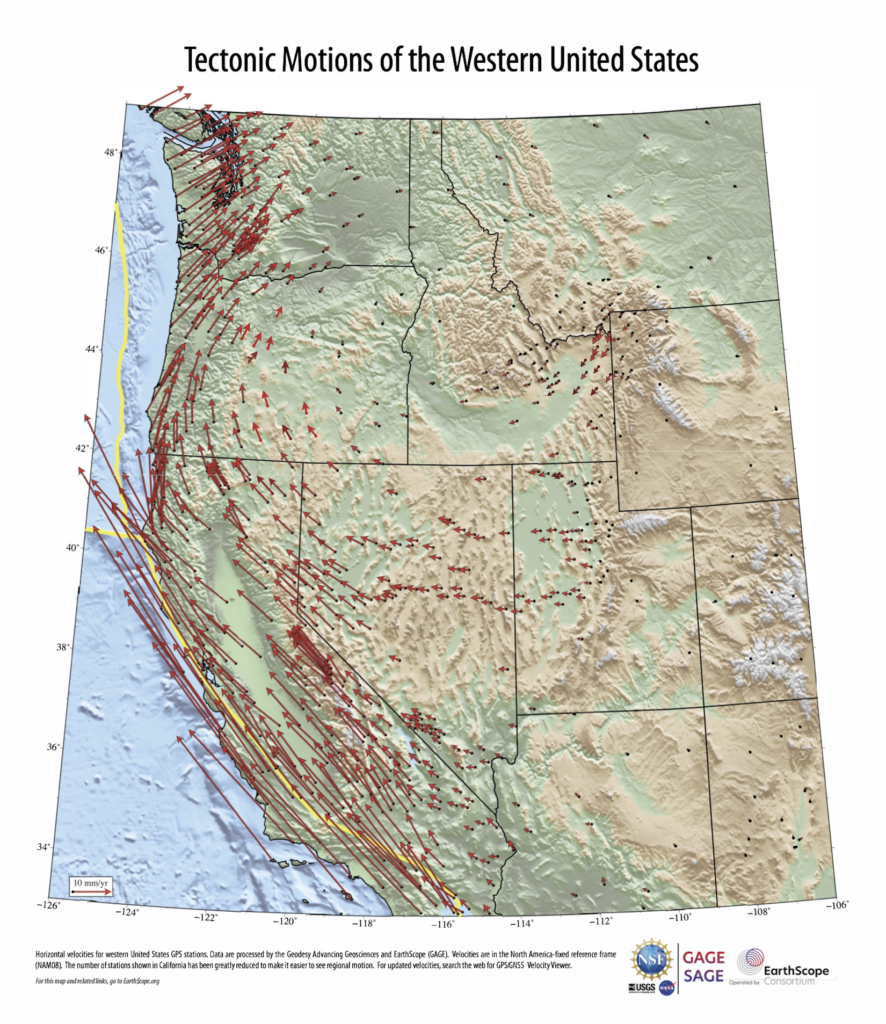
Download updated map as PNG or PDF
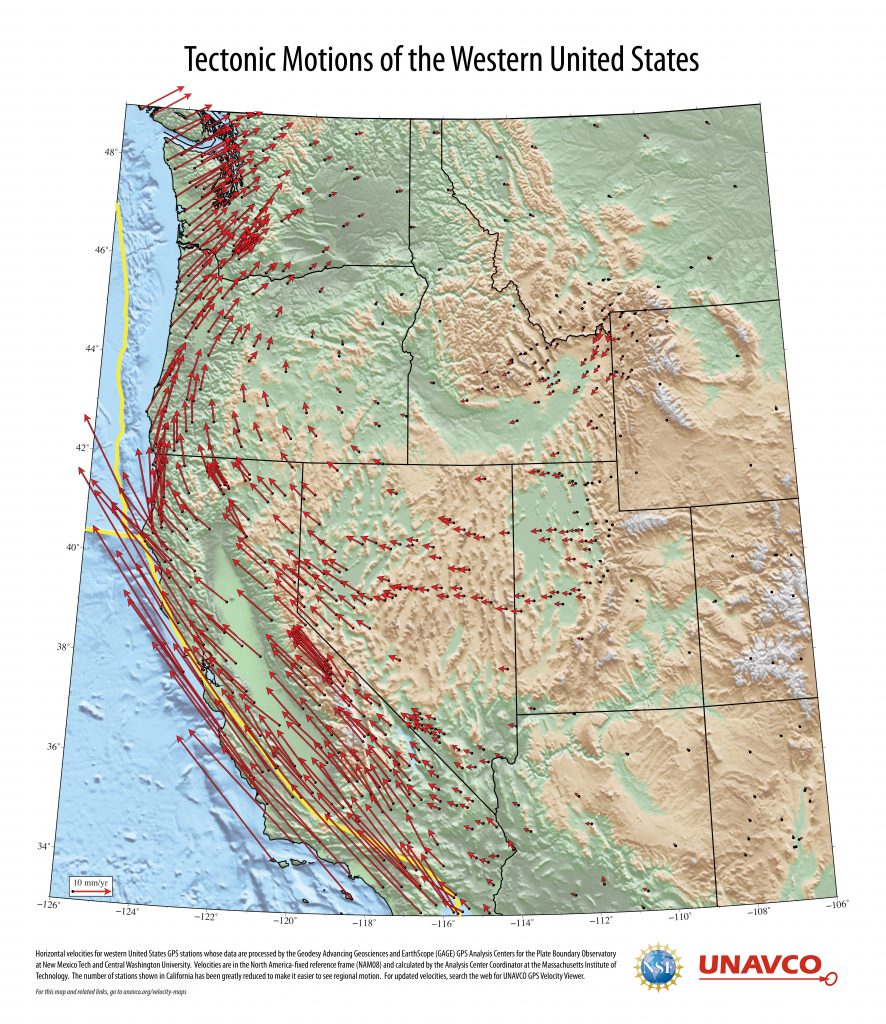
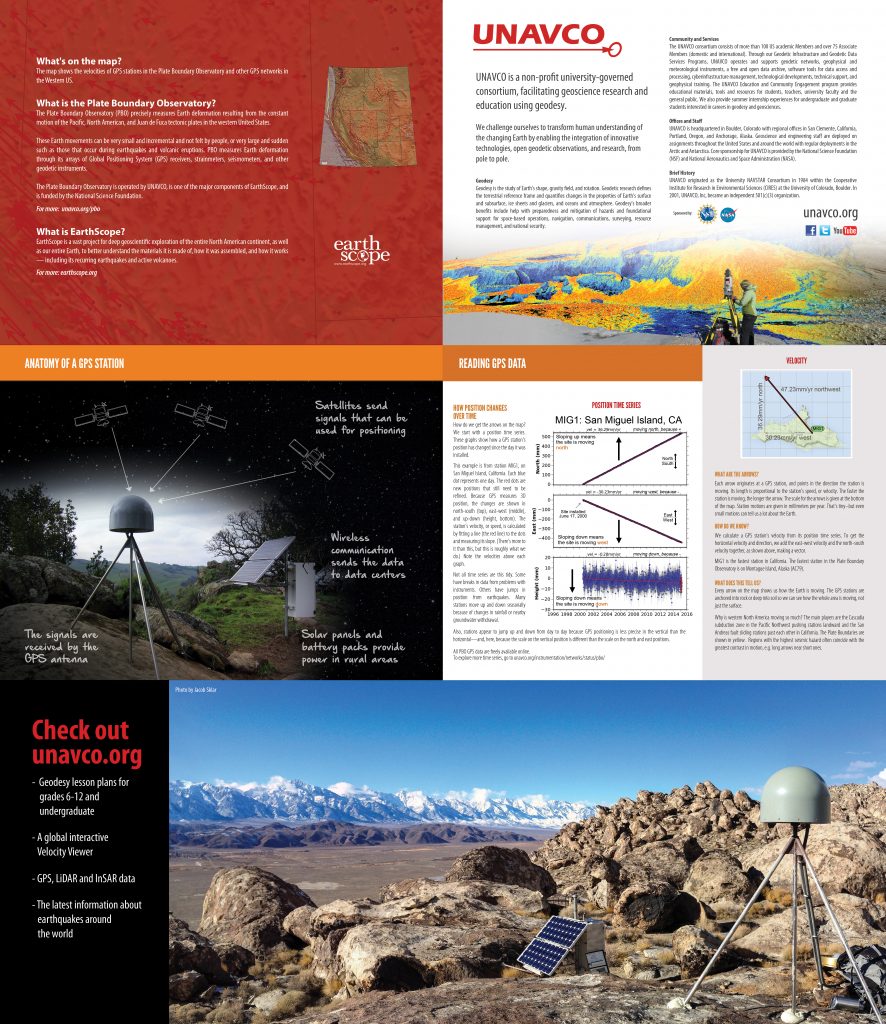
Download Western United States poster as high-resolution PDF front and back (archived UNAVCO files)
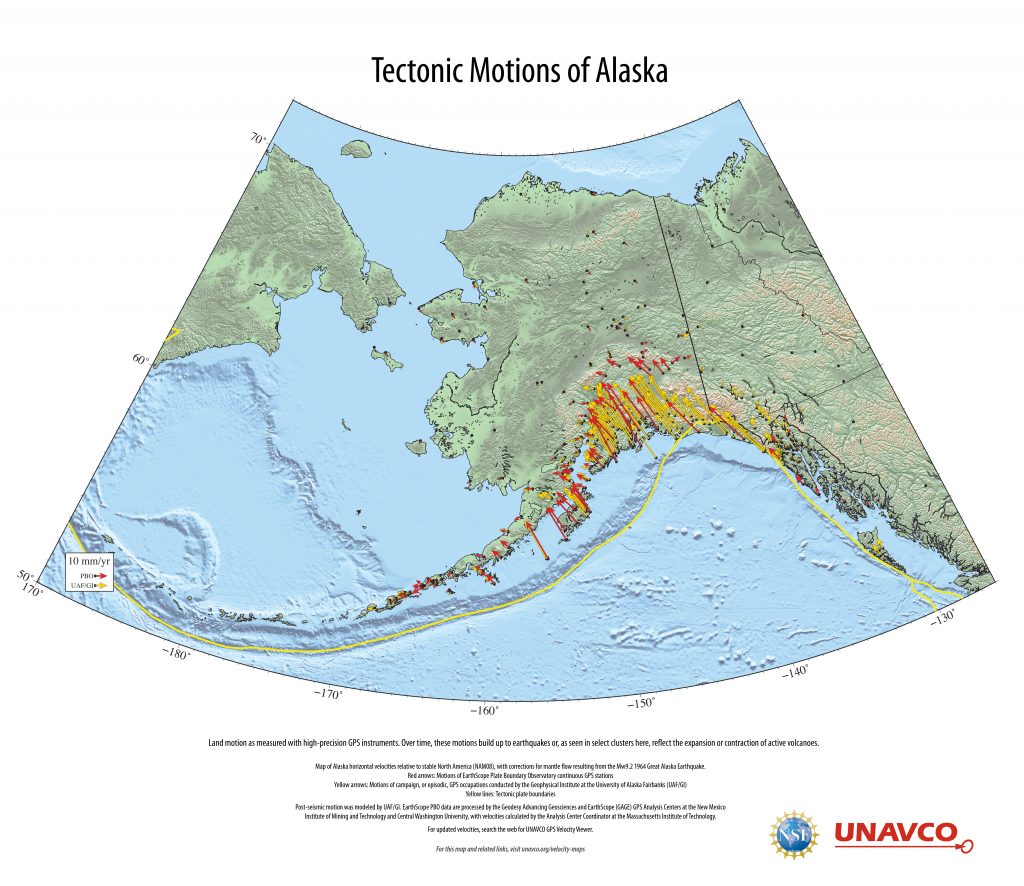
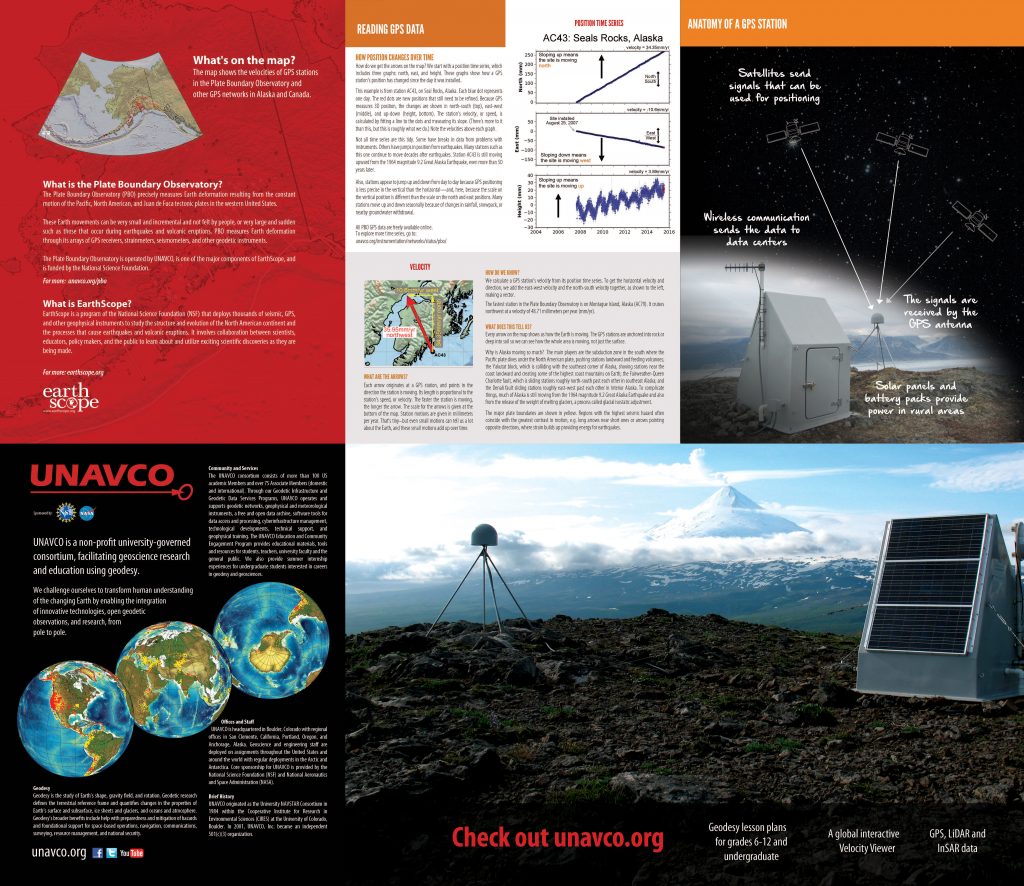
Download Alaska poster as high-resolution PDF front and back (archived UNAVCO files)
“I want to be a geoscientist” flyer
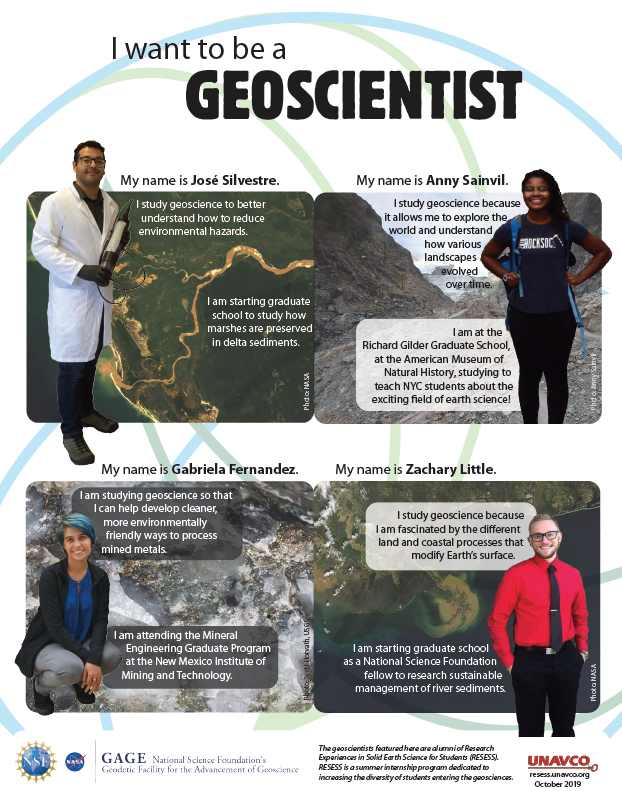
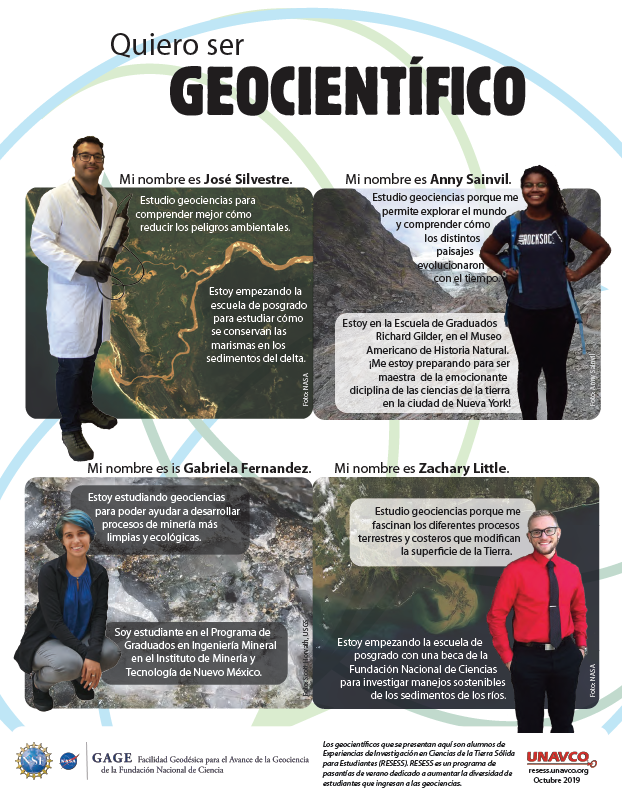
This page-sized flyer features four alumni of the RESESS internship program. English on one side, Spanish on the other.
Download as PDF (archived UNAVCO files)
Measuring the Earth: The Science of Geodesy
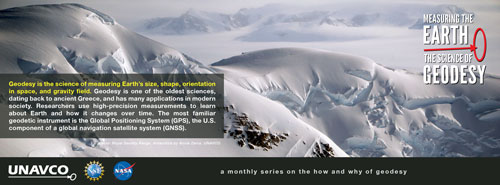
What is geodesy, and how does this science serve society? This series, based on content from the 2018 UNAVCO calendar, explores these questions by highlighting geodesy’s many applications. Created by Daniel Zietlow with assistance from Beth Bartel.
This series was also adapted into a single poster translated into French (PDF) and German (PDF) by Swisstopo. (archived UNAVCO files)
Earth Hazards
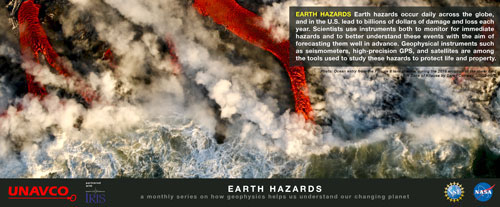
Our dynamic planet’s active processes yield the beauty of mountains as well as the dangers of earthquakes, volcanoes, landslides and more. This series, based on content from the 2019 UNAVCO-IRIS calendar, highlights the ongoing contributions of geodesy and seismology to understanding Earth hazards. Created by Daniel Zietlow, Kelsey Russo-Nixon, and Beth Bartel.
Seeing our Earth 2020
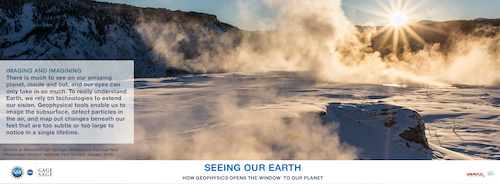
There is much to see on our amazing planet, inside and out, and our eyes can only take in so much. This series, based on content from the 2020 GAGE-SAGE calendar produced by UNAVCO and IRIS, explores how geophysical technologies extend our vision. Created by Kelsey Russo-Nixon with assistance from Beth Bartel.
Home
- Education
- Education Resources
- Last updated: 1 April 2024

